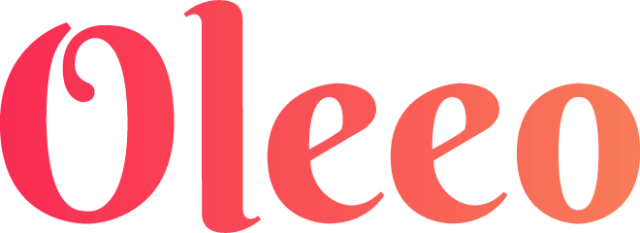Why Diversity and Inclusion in Recruitment Matters: 11 Essential Best Practices and Tips

Diversity and inclusion in recruitment is a crucial topic in today’s professional world. No company wants to believe it isn’t fostering Diversity In The Workforce. However, unconscious bias, whether recognized or not, can hinder diversity efforts. Every company must address this challenge, which can’t be resolved overnight.
To build a truly diverse workforce, create a recruitment process that embraces diversity and inclusion at every stage. From the moment a candidate enters the pipeline to the final decision, ensure your process is optimized to identify and reduce biases.
What is Diversity?
Diversity refers to differences within a given setting, encompassing various characteristics that make individuals unique. These differences can include, but are not limited to, race, ethnicity, gender, age, sexual orientation, disability, socioeconomic status, religion, and cultural background. Diversity also extends to diverse experiences, skills, perspectives, and ideas.
In workplaces, embracing diversity means recognizing, valuing, and leveraging these differences to create a more dynamic, innovative, and effective organization.
What is a Diversity Recruiting Strategy?
A Diversity Recruiting Strategy is a deliberate and proactive approach organizations employ to attract, hire, and retain candidates from diverse backgrounds.
The strategy involves implementing targeted initiatives and practices aimed at increasing diversity within the workforce. These include sourcing candidates from underrepresented groups, creating inclusive job postings, conducting unbiased selection processes, providing diversity training for hiring teams and fostering an inclusive workplace culture.
The goal of a diversity recruiting strategy is to build a more diverse and equitable workforce that reflects the broader community, promotes innovation, and enhances organizational performance
What is Inclusion?
Inclusion refers to creating an environment where all individuals, regardless of their background, identity, or characteristics, feel valued, respected, and supported. It involves fostering a sense of belonging and ensuring everyone has equal access to opportunities, resources, and participation in all aspects of the organization.
Inclusion goes beyond simply embracing diversity; it requires actively promoting equitable practices, addressing barriers to inclusion, and valuing the contributions of every individual. A truly inclusive environment encourages collaboration, innovation, and the celebration of diverse perspectives, ultimately leading to stronger teams, higher employee engagement, and better organizational outcomes.

What is Inclusive Recruitment?
So, what is inclusive recruitment? Well, inclusive recruitment involves designing and implementing hiring processes that prioritize fairness, equity, and diversity. It also involves actively seeking out candidates from underrepresented groups, removing biases and barriers from the selection process, and creating a welcoming and accessible experience for all applicants.
Inclusive recruitment strategies encompass various initiatives, such as using unbiased job descriptions, implementing diverse candidate sourcing techniques, conducting structured interviews, providing accommodations for candidates with disabilities, and offering training for hiring teams on inclusive practices.
The goal of Inclusive Recruiting is to build a diverse and representative workforce that reflects the broader community and fosters a culture of belonging and respect for all individuals.
Why are Diversity and Inclusion Important in Recruitment?
Diversity and inclusion in recruitment are vital for several reasons. Ultimately, the reason why diversity hiring is important is because it not only strengthens teams and organizations but also contributes to building more equitable and inclusive societies as a whole. Let’s take a look at the benefits:
-
Innovation and creativity: Recruitment diversity and inclusion encourage innovation and creativity by bringing together individuals with diverse perspectives, experiences, and backgrounds, which leads to more robust problem-solving and decision-making.
-
Organizational performance: Diversity and inclusion in recruiting boost organizational performance and competitiveness by enabling companies to understand better and meet the needs of diverse customer bases and markets.
-
Employee engagement: Diversity and Inclusion in Recruitment Activities promote employee engagement, satisfaction, and retention by creating an environment where all individuals feel valued, respected, and supported, leading to higher morale and productivity.
-
Fair evaluation: Recruiting for diversity and inclusion helps mitigate unconscious biases in the hiring process, ensuring that candidates are evaluated based on their skills, qualifications, and potential rather than irrelevant factors.

Diversity and Inclusion in Recruitment: 11 Best Practices and Tips
So how do you start building a recruitment process focused on diversity and inclusion? Here are eleven practical tips to ensure diversion and inclusion in recruitment while combatting unconscious bias in the hiring process.
1. Set SMART objectives
Setting SMART goals for Diversity and Inclusion in Recruitment and Selection is essential for creating a clear and actionable roadmap to achieve the outcomes you want. SMART goals are Specific, Measurable, Achievable, Relevant, and Time-bound, which ensures they are well-defined and attainable.
Here’s how and why to set SMART goals for D&I recruiting:
-
Specific: Clearly define the diversity and inclusion outcomes you want to achieve in recruitment, such as increasing the representation of underrepresented groups in the candidate pool.
-
Measurable: Establish metrics and key performance indicators (KPIs) to track progress and measure success, such as the percentage of diverse candidates hired or improvements in employee diversity satisfaction scores.
-
Achievable: Set realistic and attainable goals within the organization’s resources and constraints, considering budget, manpower, and timeframe.
-
Relevant: Ensure that the diversity and inclusion goals align with the organization’s overall mission, values, and strategic objectives, contributing to long-term success and competitiveness.
-
Time-bound: Define a specific timeframe or deadline for achieving the goals, which creates a sense of urgency and accountability, and allows for progress monitoring and adjustments as needed.
By setting SMART goals for diversity and inclusion in recruitment, organizations can effectively prioritize and focus their efforts, track progress, and demonstrate tangible results, creating a more diverse, equitable, and inclusive workplace.
2. Create a diversity recruitment strategy
Creating a diversity recruitment strategy involves developing a comprehensive plan to attract, hire, and retain diverse talent. Here’s how and why to create such a strategy:
-
Assess current state: Start by evaluating the current state of diversity within the organization, including workforce demographics, hiring practices, and existing diversity initiatives.
-
Set clear objectives: Define specific diversity goals and objectives that align with the organization’s mission, values, and business objectives. These goals should be measurable, achievable, and relevant to the organization’s needs.
-
Conduct market research: Conduct research to identify target demographics and understand the diversity landscape in the industry and region. This will help inform recruitment strategies and outreach efforts.
-
Implement inclusive practices: Integrate inclusive practices throughout the recruitment process, from job postings and candidate sourcing to interviewing and selection. This includes using unbiased language, offering accommodations, and ensuring diverse representation on hiring panels.
-
Leverage diverse sourcing channels: Expand sourcing channels to reach a wider pool of candidates from diverse backgrounds. This may include partnering with diversity-focused organizations, attending diversity job fairs, and utilizing online platforms targeted at underrepresented groups.
-
Provide diversity training: Offer training for hiring managers and recruiters on unconscious bias, inclusive interviewing techniques, and cultural competency. This will help mitigate bias and ensure fair and equitable treatment of all candidates.
By creating a diversity recruitment strategy, organizations can proactively address diversity gaps, attract top talent from diverse backgrounds, and build a more inclusive and equitable workplace. This not only enhances organizational performance but also strengthens the company’s reputation and competitive advantage in the market.
3. Promote your employer brand
Promoting your employer brand in terms of diversity and inclusion is crucial for attracting top talent and fostering a positive reputation in the market. Here’s how and why to do it:
-
Showcase diversity initiatives: Highlight your organization’s commitment to diversity and inclusion by showcasing specific initiatives, programs, and policies aimed at promoting diversity in the workplace. This could include employee resource groups, diversity training programs, mentorship opportunities, and inclusive benefits packages.
-
Share success stories: Share stories and testimonials from diverse employees who have thrived within the organization. This will demonstrate the company’s commitment to providing opportunities for all individuals to succeed, helping prospective candidates see themselves as part of a supportive and inclusive workplace culture.
-
Leverage social media: Use social media platforms to amplify your messages about diversity and inclusion initiatives, share relevant articles and resources, and engage with diverse communities online. This can help increase brand visibility and attract diverse talent who resonate with your organization’s values.
-
Partner with diversity organizations: Collaborate with diversity-focused organizations, universities, and professional associations to expand your reach and connect with diverse talent pools. This could involve sponsoring events, participating in career fairs, or hosting networking opportunities.
-
Incorporate diversity into brand messaging: Integrate messages about diversity and inclusion into your employer branding efforts, including company website content, job postings, and recruitment materials. This will demonstrate a genuine commitment to diversity and help differentiate your organization as an inclusive employer.
-
Measure and communicate progress: Regularly assess the effectiveness of diversity and inclusion initiatives and communicate progress to internal and external stakeholders. This demonstrates transparency and accountability and reinforces the organization’s commitment to continuous improvement in diversity and inclusion efforts.
4. Build an accessible website
Creating an accessible website is crucial when promoting diversity and inclusion online. It ensures that all individuals, regardless of their abilities or disabilities, can access and engage with your online content. Here’s why it’s important:
-
Inclusivity: An accessible website demonstrates a commitment to inclusivity by ensuring everyone, including individuals with disabilities, can navigate and interact with your website. By removing barriers to access, you create a more welcoming and equitable online environment for all users.
-
Reach a wider audience: Making your website accessible allows you to reach a broader audience, including people with visual, auditory, motor, or cognitive impairments. This enables individuals with disabilities to access your content, products, and services, thereby increasing your potential customer base and fostering a more diverse user community.
-
Legal compliance: Many countries have regulations and accessibility standards, such as the Americans with Disabilities Act (ADA) in the United States or the Web Content Accessibility Guidelines (WCAG), that require businesses and organizations to ensure their websites are accessible to people with disabilities. Failure to comply with these regulations can result in legal liabilities and reputational damage.
-
Positive brand image: Creating an accessible website enhances your brand’s reputation as a socially responsible and inclusive organization. It shows that you value diversity and are committed to providing equal opportunities for all individuals, regardless of their abilities. This can increase trust, loyalty, and positive word-of-mouth recommendations from users.
-
Better user experience: Accessibility features, such as alternative text for images, keyboard navigation, and captioned videos, not only benefit users with disabilities but also improve the overall user experience for everyone. By implementing these features, you create a more user-friendly website that is easier to navigate and understand for all visitors.
5. Expand the talent pool with AI-sourcing
Diversity hiring is about more than CV screening and interview evaluation. It starts when you draft your job description and start outreach to locate ideal candidates. The bottom line is simple: If you’re not drawing from diverse sources, you won’t pull diverse candidates. This is an area where AI can help. Intelligent Solutions can help you search job boards and other online platforms to find the perfect match for the job position, using factors like skills, predicted performance, and corporate fit.
Doing this process manually isn’t just time-consuming. When recruiters search the same platforms each time — with the same assumptions in mind — you’re less likely to get a diverse candidate pool.
6. Refine the wording of job descriptions
The wording of your job description may be more important than you think. Biases can creep into the language we use daily — job descriptions are no exception. Even subtle word choices can have a powerful impact. Research shows that “masculine-coded” words like “active,” “confident,” “driven,” or “competitive” can discourage women from applying. Using excessive business jargon, over-the-top descriptions, or unnecessary long words can deter applicants from underprivileged backgrounds.
When writing job descriptions, consider language carefully. Use Gender-Neutral Terms, keep the job requirements straightforward, and highlight your brand’s commitment to diversity. Certain software programs can help reduce the possibility of human bias, flagging gendered terms to help you attract a diverse candidate pool.
7. Automate the screening process
When we leave candidate screening up to manual human labor, biases can easily trickle in. Demographic characteristics like name, gender, or address are all factors that can lead to unconscious bias, either in favor of a candidate or against them.
Software algorithms allow you to cut through these biases, instead building an assessment of each candidate based on qualifications, attributes, and experience that make them right for the job. The key, however, is to ensure that these algorithms don’t reproduce discriminatory patterns — look for AI systems built with diversity in mind.
8. Use skills-based assessments to test candidates
Many aspects of the application process, from cover letters to interviews, are subject to bias. However, there’s a way to evaluate candidates fairly and level the playing field: a skills-based test.
A skills-based test offers a chance to compare candidates clearly and objectively. It removes factors that could lead to biased decisions and hones in on a single question: How will this candidate perform on the job?
9. Standardize the interview process
When it’s time to start interviewing your top candidates, it’s important to standardize the interview questions. It can be tempting to allow interviews to become casual and unstructured. Many hiring managers favor this interviewing strategy to get a better feel for the candidate, from their experience to their personality. But unstructured interviews may lead managers to make decisions based on first impressions or a gut feeling, rather than an unbiased look at the candidate’s capabilities.
That’s why standardized and structured are so important. Stick to a series of defined questions and assess all your candidates against the same benchmarks.
10. Make data-driven hiring decisions
Even if you’ve carefully checked for potential biases in every step of the Recruitment Funnel, they can still influence your final hiring decision — even if you don’t realize it. Instead of letting emotion or gut feelings drive your decisions, let the intelligent data insights guide you.
Thanks to the development of new AI technologies, this is easier than ever. From skills assessments to candidate profiles, AI solutions can draw upon all the information you’ve collected so far to make an unbiased candidate evaluation. With all the objective benchmarks in front of you, making a fair hiring decision becomes much more straightforward.
11. Optimize your diversity and inclusion strategy after every hire
The work isn’t over once you’ve found the right fit, extended an offer, and welcomed your ideal candidate into the workplace. Now, it’s time to assess your diversity and inclusion strategy. What worked and what didn’t?
This is another area where recruiting software can help. By tracking the right Diversity Recruiting Metrics, creating regular reports, and setting a Diversity Recruiting benchmark, you can continue to improve your strategy year after year. Bias is something you can’t ever completely eliminate, but you can continue to optimize your process to put diversity front and center in your organization.

Ensure Diversity and Inclusion in Your Recruitment Process With Oleoo Software
Creating a diverse workforce requires genuine commitment, but the benefits are substantial. An inclusive workforce enhances employee satisfaction and boosts company productivity.
Achieving true diversity and inclusion takes more than promises. To overcome unconscious biases, equip your team with tools to prioritize diversity at every hiring stage, from Diversity Sourcing to interviewing.
For a broad diversity and inclusion recruitment solution, Oleeo offers tools to track diversity and inclusion efforts, generate detailed reports, and use AI-powered software to ensure equity throughout your hiring process. Learn more about our Diversity Recruiting Platforms or Book a Demo today.
FAQs About Diversity and Inclusion in Recruitment
How do diversity and inclusion in recruitment affect candidate experience?
Diversity and inclusion in recruitment significantly enhance the candidate experience by ensuring all applicants feel valued and respected throughout the hiring process. When candidates see that a company is committed to diversity, they are more likely to feel welcomed and encouraged to apply, knowing their unique backgrounds and perspectives are appreciated.
What is unconscious bias, and how does it affect recruitment?
Unconscious bias refers to the automatic and unintentional stereotypes or prejudices that individuals hold, which can influence their judgments and actions without them realizing it. In recruitment, unconscious bias can significantly affect the hiring process by leading to unfair evaluations of candidates based on irrelevant factors such as race, gender, age, or background. This can result in a less diverse workforce and may cause highly qualified candidates to be overlooked simply because they do not fit the unconscious preferences of the hiring team.
What is diversity sourcing?
Diversity sourcing is the proactive strategy of identifying and attracting candidates from underrepresented groups to create a more inclusive and diverse workforce. This involves utilizing various channels and methods to reach a broad spectrum of potential candidates, such as attending diversity job fairs, partnering with minority-focused organizations, and posting job openings on inclusive job boards.
What are common challenges in implementing diversity and inclusion in recruitment?
Common challenges in implementing diversity and inclusion in recruitment include overcoming unconscious bias, ensuring a diverse candidate pool, and balancing diversity with finding the best fit for the role. Companies often struggle with ingrained biases that can affect decision-making, and it can be difficult to attract a wide range of candidates.
Additionally, maintaining a consistent and fair hiring process while gaining buy-in from all levels of the organization can be challenging. These obstacles require ongoing effort, education, and the use of inclusive practices and technologies to create a diverse and inclusive hiring process effectively.
How do you measure the success of diversity and inclusion initiatives?
Measuring the success of diversity and inclusion initiatives involves tracking key metrics such as the demographic composition of applicants, hires, and promotions to ensure a diverse talent pipeline. Additionally, monitoring retention rates and employee satisfaction surveys can provide insights into how inclusive the workplace environment is. Regularly conducting pay equity analyses helps identify and address compensation disparities.
Employee feedback and engagement surveys can gauge the effectiveness of inclusion efforts, while diversity training participation and outcomes can highlight areas for improvement. Thorough reporting and analysis of these metrics help organizations understand the impact of their initiatives and guide continuous improvement.
For a broad diversity and inclusion recruitment solution, Oleeo offers tools to track diversity and inclusion efforts, generate detailed reports, and use AI-powered software to ensure equity throughout your hiring process. Learn more about our Diversity Recruiting Platforms or Book a Demo today.



